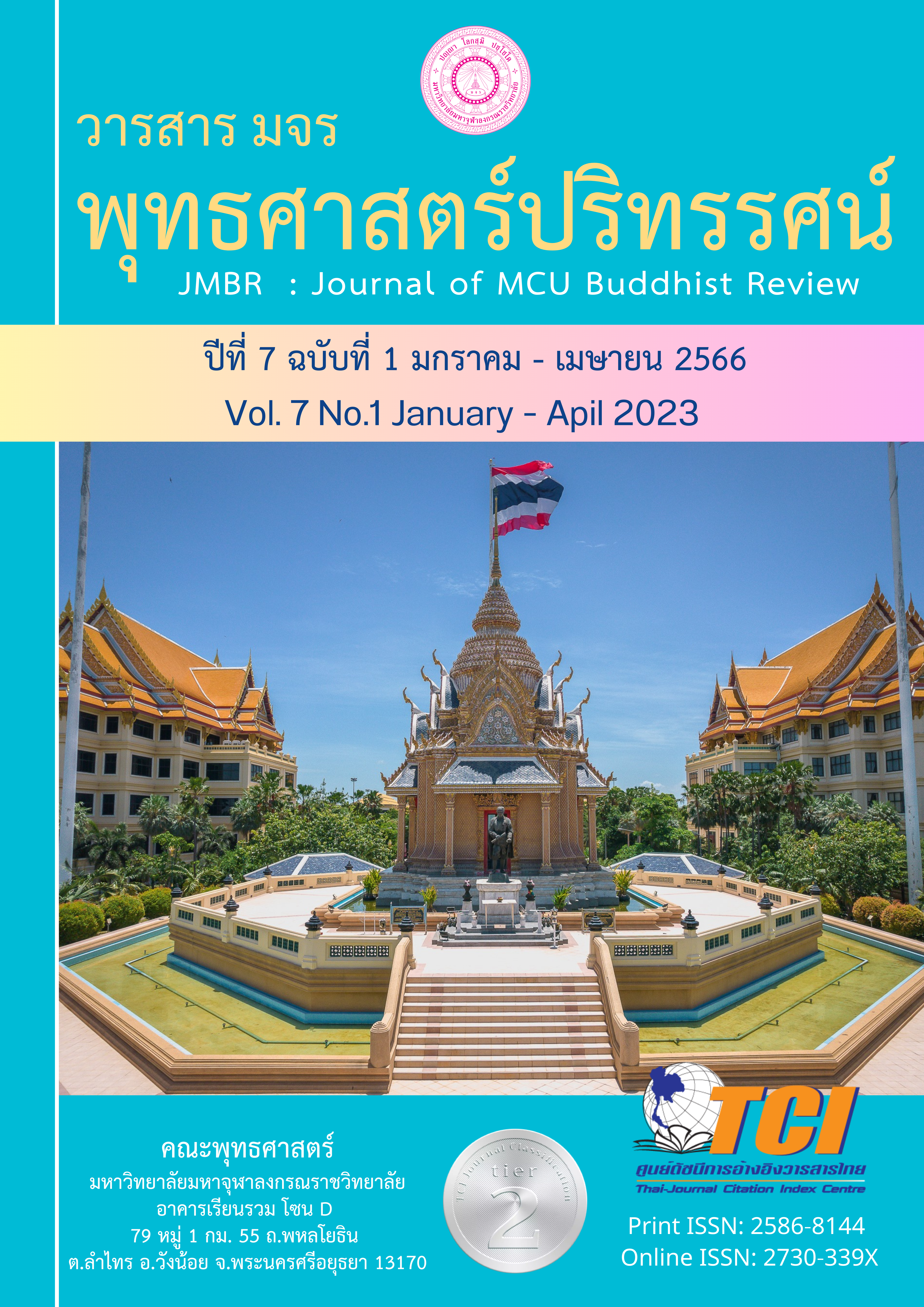สุนทรียศาสตร์ในพุทธปรัชญาเถรวาท
Main Article Content
บทคัดย่อ
บทความวิชาการเรื่องนี้ มีวัตถุประสงคเพื่อนำเสนอแนวคิดสุนทรียศาสตร์ในพุทธปรัชญา เถรวาท ด้านความหมายของสุนทรียศาสตร์ในพุทธปรัชญาเถรวาท การตัดสินความงาม และแนวคิดสุนทรียศาสตร์ตะวันตกกับพุทธปรัชญา ศึกษาจากตำรา เอกสาร บทความ และงานวิจัยที่เกี่ยวข้อง สุนทรียศาสตร์เป็นศาสตร์ที่ศึกษาเกี่ยวกับความงาม ซึ่งอาจเป็นความงามในธรรมชาติหรือความงามทางศิลปะที่มนุษย์สร้าง ซึ่งมีความสัมพันธ์กับสิ่งต่างๆ ในการดำรงชีวิตของมนุษย์ โดยมุ่งเน้นด้านอารมณ์และความรู้สึก พุทธปรัชญากล่าวถึงความงามใน 2 มิติ คือ 1) ความงามในมิติทางโลก พุทธปรัชญาถือว่าเป็นผลของการมีปฏิสัมพันธ์ต่อกันระหว่างคุณภาพหรือคุณสมบัติของวัตถุกับกิเลสคือ ความยินดีในจิตใจหรือในสันดานของคนแต่ละคน รับรู้ได้ด้วยจากประสาทสัมผัสทั้ง 5 คือ รูป รส เสียง กลิ่น เสียง สัมผัส ถือเป็นจิตวิสัยหรือไม่มีจริง เมื่อความงามทางวัตถุไม่มีจริง จึงเป็นสิ่งไม่มีคุณค่าหรือไม่มีประโยชน์ต่อชีวิตเพราะพุทธปรัชญาถือว่าสิ่งที่จริงเท่านั้นจึงมีประโยชน์ 2) ความงามในมิติทางธรรม เป็นประสบการณ์ความงามทางจิตใจ ความงามที่เป็นนามธรรม เป็นประสบการณ์ที่เกิดหรือสัมผัสได้หรือรับรู้ได้โดยการปฏิบัติ เช่น ปฏิบัติคุณความดีแล้วย่อมทำให้ผู้ปฏิบัติมีความสุข ทำให้คนทั่วไปรู้เห็นได้ว่าเป็นผู้มีธรรมหรือเป็นคนที่งาม ความงามของธรรมเป็นวัตถุวิสัย เป็นสากล ทุกคนที่รู้หรือสัมผัสได้ ความงามของธรรมไม่ใช่ลักษณะทางอารมณ์หรือความรู้สึก เช่น สวย ไม่สวย แต่หมายถึงลักษณะทาง “คุณค่า” คืออนุเคราะห์ประโยชน์และเกื้อกูลสุข สุนทรียศาสตร์ในพุทธปรัชญาเถรวาทเป็นการผสมผสานระหว่างศีลธรรมและศิลปะที่พระพุทธองค์ตรัส ล้วนมีความงามทั้งในเบื้องต้น ท่ามกลาง และที่สุด กล่าวคือธรรมะที่พระพุทธเจ้าประกาศแก่สัตว์โลกโดยไม่ปิดบัง ประดุจผู้เปิดภาชนะที่คว่ำอยู่ให้หงายขึ้น ทำให้ผู้ปฏิบัติตามมีความสุข ปราศจากกิเลส และเป็นมนุษย์ที่สมบูรณ์ด้วยศีล สมาธิ ปัญญา
Article Details

อนุญาตภายใต้เงื่อนไข Creative Commons Attribution-NonCommercial-NoDerivatives 4.0 International License.
- บทความที่ได้รับการตีพิมพ์เป็นลิขสิทธิ์ของวารสาร มจร พุทธศาสตร์ปริทรรศน์
- ข้อความใดๆ ที่ปรากฎในบทความที่ได้รับการตีพิมพ์ในวารสาร ถือเป็นความรับผิดชอบของผู้เขียนบทความ และข้อคิดเห็นนั้นไม่ถือว่าเป็นทัศนะและความรับผิดชอบของกองบรรณาธิการวารสาร มจร พุทธศาสตร์ปริทรรศน์
เอกสารอ้างอิง
กีรติ บุญเจือ. (2522). ปรัชญาศิลปะ. กรุงเทพฯ: ไทยวัฒนาพานิช.
มหาจุฬาลงกรณราชวิทยาลัย. (2539). พระไตรปิฎกภาษาไทย ฉบับมหาจุฬาลงกรณราชวิทยาลัย. กรุงเทพฯ: โรงพิมพ์มหาจุฬาลงกรณราชวิทยาลัย.
มหามกุฏราชวิทยาลัย. (2540). ธรรมบทแปล ภาค 2. กรุงเทพฯ: มหามกุฏราชวิทยาลัย.
พระราชวรมุนี (ประยูร ธมฺมจิตโต). (2544). ปรัชญากรีก: บ่อเกิดภูมิปัญญาตะวันตก. พิมพ์ครั้งที่ 5. กรุงเทพฯ: สำนักพิมพ์ศยาม.
พระราชวรมุนี (ประยุทธ์ ปยุตฺโต). (2529). พุทธธรรม. กรุงเทพฯ: ด่านสุทธาการพิมพ์.
NaRangsi, S. (1976). The Buddhist Concepts or Karma and Rebirth. Bangkok: MahamkutRajavidyalaya Press.


